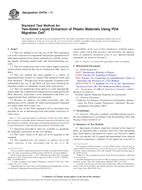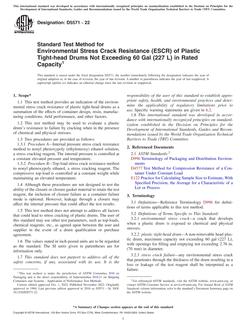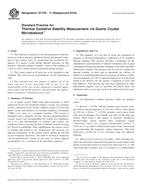1.1 This test method covers the use of automated vapor pressure instruments to determine the total vapor pressure exerted in vacuum by air-containing, volatile, liquid petroleum products. This test method is suitable for testing samples with boiling points above 0°C (32°F) that exert a vapor pressure between 7 and 130 kPa (1.0 and 18.6 psi) at 37.8°C (100°F) at a vapor-to-liquid ratio of 4:1. Measurements are made on liquid sample sizes in the range from 1 to 10 mL. No account is made for dissolved water in the sample.
Note 1 – Samples can also be tested at other vapor-to-liquid ratios, temperatures, and pressures, but the precision and bias statements need not apply.
1.1.1 Some gasoline-oxygenate blends may show a haze when cooled to 0 to 1°C. If a haze is observed in 8.5, it shall be indicated in the reporting of results. The precision and bias statements for hazy samples have not been determined (see Note 10).
1.2 This test method is suitable for calculation of the dry vapor pressure equivalent (DVPE) of gasoline and gasoline-oxygenate blends by means of a correlation equation (see 13.2). The calculated DVPE very closely approximates the dry vapor pressure that would be obtained on the same material when tested by Test Method D 4953.
1.3 The values stated in SI units are regarded as standard. The inch-pound units given in parentheses are provided for information only.
1.4 This standard does not purport to address all of the safety concerns, if any, associated with its use. It is the responsibility of the user of this standard to establish appropriate safety and health practices and determine the applicability of regulatory limitations prior to use. For specific warning statements, see 7.2 through 7.7.
Product Details
- Published:
- 10/04/2004
- Number of Pages:
- 6
- File Size:
- 1 file , 80 KB


